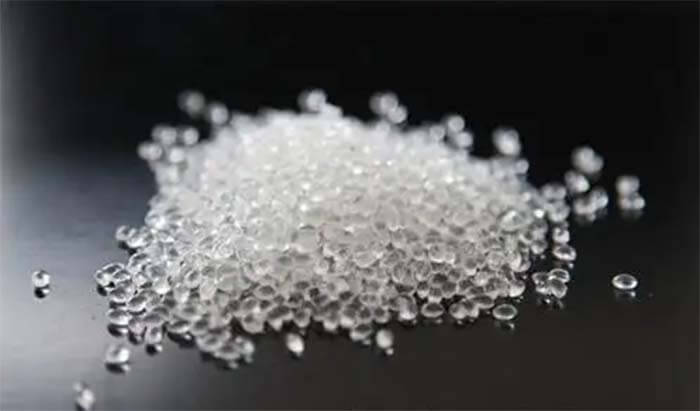
What are the factors that affect the shrinkage of thermoplastic molding?
The following are 5 factors that affect the shrinkage of thermoplastic molding and the solutions for the shrinkage of thermoplastic molding affected by these factors.
The shrinkage of thermoplastic molding factor 1. Characteristics of plastic materials
The molten material is immediately cooled to form a low-density solid shell when the outer layer is in contact with the surface of the cavity during molding. Due to the poor thermal conductivity of the plastic, the inner layer of the plastic part cools slowly and forms a high-density solid layer with high shrinkage.
The shrinkage of thermoplastic molding factor 2. Plastic material varieties
Plastic material varieties of thermoplastic molding process due to the existence of crystallization of volume changes, internal stress, frozen in the plastic residual stress, molecular orientation, and other factors, so compared with thermosetting plastics, the shrinkage rate is larger, a wide range of shrinkage rate, directional obvious.
In addition, the shrinkage after molding, annealing, or moisture treatment is generally larger than that of thermosetting plastics.
The molten material is immediately cooled to form a low-density solid shell by contacting the outer layer of the cavity surface during molding. Due to the plastic’s poor thermal conductivity, the plastic part’s inner layer cools slowly and forms a high-density solid layer with large shrinkage. Therefore, the wall thickness, slow cooling, and the high-density layer are thick shrinkage.
In addition, the presence or absence of inserts and the layout and number of inserts have a direct impact on the direction of material flow, density distribution, and shrinkage resistance, so the characteristics of the plastic materials have a greater impact on the size and direction of shrinkage.
The shrinkage of thermoplastic molding factor 3. Molding conditions
High mold temperature, slow cooling of molten material, high density, and shrinkage, especially for crystalline material, is due to high crystallinity and volume change, so shrinkage is greater.
Mold temperature distribution and cooling inside and outside the plastic materials and density uniformity is also related, directly affecting the size and direction of the shrinkage of each part.
In addition, the holding pressure and time also have a greater impact on the shrinkage. The pressure is high. The time is long shrinkage is small but directional.
Injection pressure is high, the molten material viscosity difference is small, the interlayer shear stress is small, and the elasticity after the mold jump, so the shrinkage can also be moderately reduced, the material temperature is high, shrinkage is large, but the directionality is small.
Therefore, adjusting the mold temperature, pressure, injection speed, and cooling time during molding can also change the shrinkage of plastic materials.
Mold design according to the shrinkage range of various plastics, plastic wall thickness, shape, inlet form size, and distribution, according to experience, to determine the shrinkage rate of each part of the plastic and then calculate the cavity size.
The shrinkage of thermoplastic molding factor 4. Inlet form, size, etc.
Inlet form, size, and distribution of these factors directly affect the direction of material flow, density distribution, the role of pressure-holding and shrinkage, and molding time.
Direct feed port, feed port cross-section large (especially thicker cross-section) is small shrinkage but directional, feed port wide and short length is directional small. Close to the inlet or parallel to the direction of the material flow is a large shrinkage.
The shrinkage of thermoplastic molding factor 5. Mold design method
Mold design according to the shrinkage range of various plastics, plastic wall thickness, shape, inlet form size, and distribution, according to experience to determine the shrinkage rate of each part of the plastic materials, and then calculate the cavity size.
For high-precision plastic materials and difficult-to-grasp shrinkage rate, it is generally appropriate to use the following method to design the mold.
Take a lower shrinkage rate for the outer diameter of plastic materials and a larger shrinkage rate for the inner diameter to allow room for correction after mold trial;
Test mold to determine the form, size, and molding conditions of the pouring system;
To determine the dimensional change of the post-processed part after the post-processing (measurement must be done 24 hours after the mold release);
Modify the mold according to the actual shrinkage;
Re-testing the mold and changing the process conditions to slightly correct the shrinkage value to meet the requirements of the molded part.
Besides the 5 Factors Affect the Shrinkage of Thermoplastic Molding article, you may also be interested in the below.
6 Common Plastic Injection Molding Process Techniques
What is Multi-material Injection Molding?
How to Increase the Brightness of ABS Plastic Products?
Hot Runner Injection Molding Defects and Troubleshooting
11 Analyses of Injection Molding Process Parameters
17 Injection Molding Problems And Solutions
